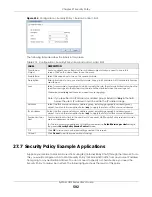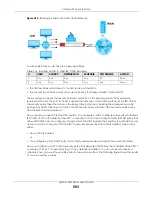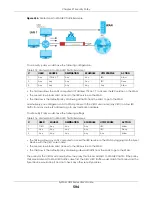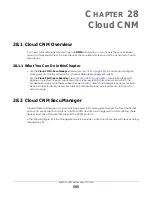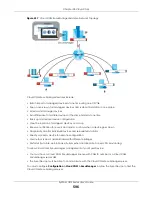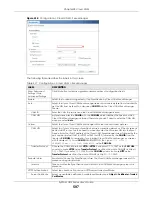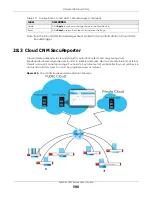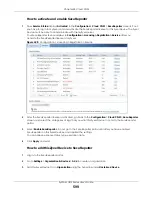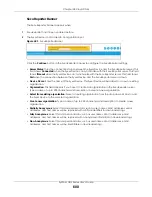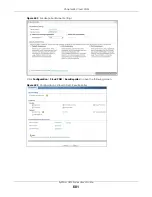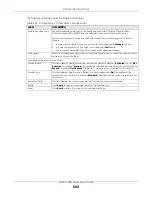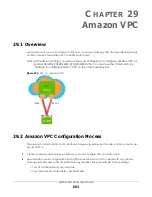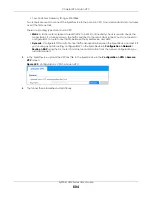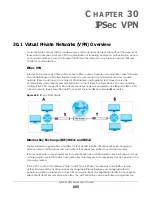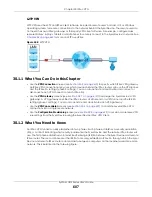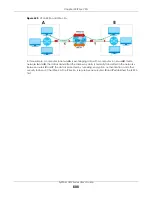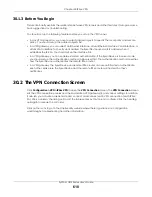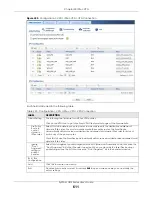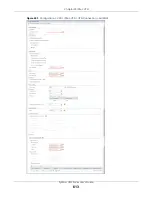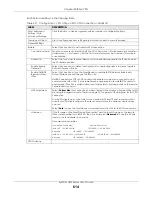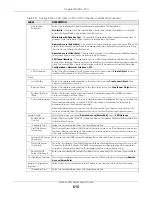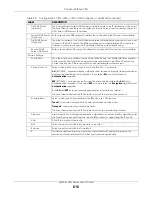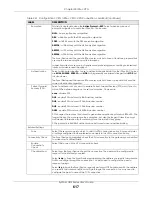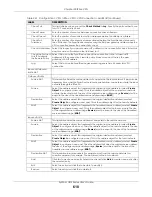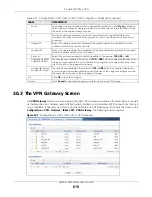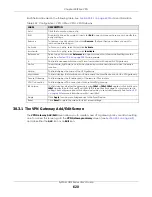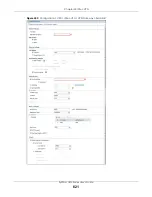
Chapter 30 IPSec VPN
ZyWALL USG Series User’s Guide
606
shared key (shared secret), signatures, or public key encryption. Phase 1 operates in either
Main Mode
or
Aggressive Mode
.
Main Mode
protects the identity of the peers, but
Aggressive Mode
does not.
During Phase 2, the remote IPSec routers use the secure channel established in Phase 1 to negotiate
Security Associations for IPSec. The negotiation results in a minimum of two unidirectional security
associations (one inbound and one outbound). Phase 2 uses Quick Mode (only). Quick mode occurs
after IKE has established the secure tunnel in Phase 1. It negotiates a shared IPSec policy, derives shared
secret keys used for the IPSec security algorithms, and establishes IPSec SAs. Quick mode is also used to
renegotiate a new IPSec SA when the IPSec SA lifetime expires.
In the Zyxel Device, use the
VPN Connection
tab to set up Phase 2 and the
VPN Gateway
tab to set up
Phase 1.
Some differences between IKEv1 and IKEv2 include:
• IKEv2 uses less bandwidth than IKEv1. IKEv2 uses one exchange procedure with 4 messages. IKEv1 uses
two phases with Main Mode (9 messages) or Aggressive Mode (6 messages) in phase 1.
• IKEv2 supports Extended Authentication Protocol (EAP) authentication, and IKEv1 supports X-Auth.
EAP is important when connecting to existing enterprise authentication systems.
• IKEv2 always uses NAT traversal and Dead Peer Detection (DPD), but they can be disabled in IKEv1
using Zyxel Device firmware (the default is on).
• Configuration payload (includes the IP address pool in the VPN setup data) is supported in IKEv2 (off
by default), but not in IKEv1.
• Narrowed is supported in IKEv2, but not in IKEv1. Narrowed has the SA apply only to IP addresses in
common between the Zyxel Device and the remote IPSec router.
• The IKEv2 protocol supports connectivity checks which is used to detect whether the tunnel is still up
or not. If the check fails (the tunnel is down), IKEv2 can re-establish the connection automatically. The
Zyxel Device uses firmware to perform connectivity checks when using IKEv1.
SSL VPN
SSL VPN uses remote users’ web browsers to provide the easiest-to-use of the Zyxel Device’s VPN
solutions. A user just browses to the Zyxel Device’s web address and enters his user name and password
to securely connect to the Zyxel Device’s network. Remote users do not need to configure security
settings. Here a user uses his browser to securely connect to network resources in the same way as if he
were part of the internal network. See
Figure 427
SSL VPN
Web Mail
File Share
Web-based Application
https://
Application Server
Non-Web
LAN (192.168.1.X)
Summary of Contents for USG110
Page 27: ...27 PART I User s Guide ...
Page 195: ...195 PART II Technical Reference ...
Page 309: ...Chapter 10 Interfaces ZyWALL USG Series User s Guide 309 ...
Page 313: ...Chapter 10 Interfaces ZyWALL USG Series User s Guide 313 ...
Page 358: ...Chapter 10 Interfaces ZyWALL USG Series User s Guide 358 ...
Page 373: ...Chapter 10 Interfaces ZyWALL USG Series User s Guide 373 ...

